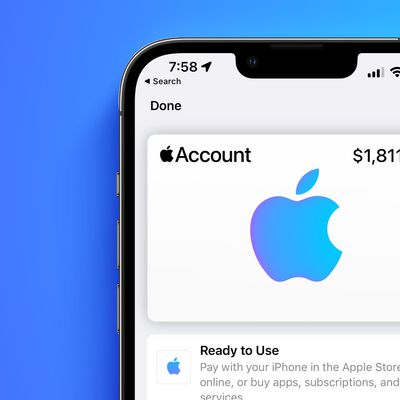Google Under Fire for Circumvention of Cookie Settings in Safari for iOS to Track Users
The Wall Street Journal reports that Google and several other advertising agencies have been discovered to be circumventing privacy protections in Apple's Safari browser for iOS devices in order to track users through ads on numerous popular websites. Google implemented the technique in order to embed +1 buttons on its ads, tricking users' systems into allowing cookies by using an invisible form submission to make Google's third-party cookies, which are blocked by Safari, appear as first-party cookies that are allowed.
To get around Safari's default blocking, Google exploited a loophole in the browser's privacy settings. While Safari does block most tracking, it makes an exception for websites with which a person interacts in some way—for instance, by filling out a form. So Google added coding to some of its ads that made Safari think that a person was submitting an invisible form to Google. Safari would then let Google install a cookie on the phone or computer.
The cookie that Google installed on the computer was temporary; it expired in 12 to 24 hours. But it could sometimes result in extensive tracking of Safari users. This is because of a technical quirk in Safari that allows companies to easily add more cookies to a user's computer once the company has installed at least one cookie.

Google halted the practice once it was contacted by The Wall Street Journal about it, but has tried to downplay the impact of the issue.
In a statement, Google said: "The Journal mischaracterizes what happened and why. We used known Safari functionality to provide features that signed-in Google users had enabled. It's important to stress that these advertising cookies do not collect personal information."
In a companion blog post, The Wall Street Journal notes that the loophole that had permitted Google to bypass Safari's privacy protections has been closed in WebKit, the open source engine behind Safari, with the change having been made by two Google engineers. Consequently, Apple could and appears to be preparing to bring that fix to the public version of Safari.
An Apple spokesman said: “We are aware that some third parties are circumventing Safari’s privacy features and we are working to put a stop to it.”
An update to the software that underlies Safari has closed the loophole that allows cookies to be set after the automatic submission of invisible forms. Future public versions of Safari could incorporate that update. The people who handled the proposed change, according to software documents: two engineers at Google.
The issue was discovered by Stanford graduate student Jonathan Mayer, who has also published an extensive blog post offering additional technical details on how Google and other advertising companies circumvented Safari's default cookie settings.
Popular Stories
Since the iPhone X in 2017, all of Apple's highest-end iPhone models have featured either stainless steel or titanium frames, but it has now been rumored that this design decision will be coming to an end with the iPhone 17 Pro models later this year.
In a post on Chinese social media platform Weibo today, the account Instant Digital said that the iPhone 17 Pro models will have an aluminum...
Apple is continuing to refine and update iOS 26, and beta three features smaller changes than we saw in beta 2, plus further tweaks to the Liquid Glass design. Apple is gearing up for the next phase of beta testing, and the company has promised that a public beta is set to come out in July.
Transparency
In some apps like Apple Music, Podcasts, and the App Store, Apple has toned down the...
The calendar has turned to July, meaning that 2025 is now more than half over. And while the summer months are often quiet for Apple, the company still has more than a dozen products coming later this year, according to rumors.
Below, we have outlined at least 15 new Apple products that are expected to launch later this year, along with key rumored features for each.
iPhone 17 Series
iPho...
Apple should unveil the iPhone 17 series in September, and there might be one bigger difference between the Pro and Pro Max models this year.
As always, the Pro Max model will be larger than the Pro model:iPhone 17 Pro: 6.3-inch display
iPhone 17 Pro Max: 6.9-inch displayGiven the Pro Max is physically larger than the Pro, it has more internal space, allowing for a larger battery and...
In 2020, Apple added a digital car key feature to its Wallet app, allowing users to lock, unlock, and start a compatible vehicle with an iPhone or Apple Watch. The feature is currently offered by select automakers, including Audi, BMW, Hyundai, Kia, Genesis, Mercedes-Benz, Volvo, and a handful of others, and it is set to expand further.
Apple has a web page with a list of vehicle models that ...
New renders today provide the best look yet relocated Apple logo and redesigned MagSafe magnet array of the iPhone 17 Pro and iPhone 17 Pro Max.
Image via Majin Bu.
Several of the design changes coming to the iPhone 17 Pro model have been rumored for some time, such as the elongated camera bump that spans the full width of the device, with the LiDAR Scanner and flash moving to the right side.
...
Apple's next-generation iPhone 17 Pro and iPhone 17 Pro Max are just over two months away, and there are plenty of rumors about the devices.
Below, we recap key changes rumored for the iPhone 17 Pro models.
Latest Rumors
These rumors surfaced in June and July:Apple logo repositioned: Apple's logo may have a lower position on the back of the iPhone 17 Pro models, compared to previous...
Apple is expanding the ability to add an Apple Account Card to the Wallet app to more countries, according to backend Apple Pay changes.
With iOS 15.5, Apple updated the Wallet app to allow users to add an Apple Account Card, which displays the Apple credit balance associated with an Apple ID.
If you receive an Apple gift card, for example, it is added to an Apple Account that is also...
![]()




















